1. Traxler RM, Bell ME, Lasker B, Headd B, Shieh WJ, McQuiston JR. Updated review on
Nocardia species: 2006-2021. Clin Microbiol Rev. 2022; 35(4):e0002721. PMID:
36314911.
2. Harpaz R, Dahl RM, Dooling KL. Prevalence of immunosuppression among US adults, 2013. JAMA. 2016; 316(23):2547–2548. PMID:
27792809.
3. Yetmar ZA, Khodadadi RB, Chesdachai S, McHugh JW, Challener DW, Wengenack NL, et al. Mortality after nocardiosis: risk factors and evaluation of disseminated infection. Open Forum Infect Dis. 2023; 10(8):ofad409. PMID:
37577117.
4. Soueges S, Bouiller K, Botelho-Nevers E, Gagneux-Brunon A, Chirouze C, Rodriguez-Nava V, et al. Prognosis and factors associated with disseminated nocardiosis: a ten-year multicenter study. J Infect. 2022; 85(2):130–136. PMID:
35654278.
5. Yetmar ZA, Challener DW, Seville MT, Bosch W, Beam E. Outcomes of nocardiosis and treatment of disseminated infection in solid organ transplant recipients. Transplantation. 2023; 107(3):782–791. PMID:
36303280.
6. Lebeaux D, Freund R, van Delden C, Guillot H, Marbus SD, Matignon M, et al. Outcome and treatment of nocardiosis after solid organ transplantation: new insights from a European study. Clin Infect Dis. 2017; 64(10):1396–1405. PMID:
28329348.
7. Chen YC, Lee CH, Chien CC, Chao TL, Lin WC, Liu JW. Pulmonary nocardiosis in southern Taiwan. J Microbiol Immunol Infect. 2013; 46(6):441–447. PMID:
23017691.
8. Presant CA, Wiernik PH, Serpick AA. Factors affecting survival in nocardiosis. Am Rev Respir Dis. 1973; 108(6):1444–1448. PMID:
4751735.
9. Restrepo A, Clark NM. Infectious Diseases Community of Practice of the American Society of Transplantation. Nocardia infections in solid organ transplantation: guidelines from the Infectious Diseases Community of Practice of the American Society of Transplantation. Clin Transplant. 2019; 33(9):e13509. PMID:
30817024.
10. Kanne JP, Yandow DR, Mohammed TL, Meyer CA. CT findings of pulmonary nocardiosis. AJR Am J Roentgenol. 2011; 197(2):W266–W272. PMID:
21785052.
11. Bhoil R. In response to the article “Computed Tomography Features of Pulmonary Nocardiosis in Immunocompromised and Immunocompetent Patients”; Pol J Radiol, 2015; 80: 13-17. Pol J Radiol. 2015; 80:281–282. PMID:
26082821.
12. Yoon HK, Im JG, Ahn JM, Han MC. Pulmonary nocardiosis: CT findings. J Comput Assist Tomogr. 1995; 19(1):52–55. PMID:
7822548.
13. Micek ST, Kollef KE, Reichley RM, Roubinian N, Kollef MH. Health care-associated pneumonia and community-acquired pneumonia: a single-center experience. Antimicrob Agents Chemother. 2007; 51(10):3568–3573. PMID:
17682100.
14. Su YB, Sohn S, Krown SE, Livingston PO, Wolchok JD, Quinn C, et al. Selective CD4+ lymphopenia in melanoma patients treated with temozolomide: a toxicity with therapeutic implications. J Clin Oncol. 2004; 22(4):610–616. PMID:
14726505.
15. Lee HN, Koo HJ, Kim SH, Choi SH, Sung H, Do KH. Human bocavirus infection in adults: clinical features and radiological findings. Korean J Radiol. 2019; 20(7):1226–1235. PMID:
31270986.
16. Hansell DM, Bankier AA, MacMahon H, McLoud TC, Müller NL, Remy J. Fleischner Society: glossary of terms for thoracic imaging. Radiology. 2008; 246(3):697–722. PMID:
18195376.
17. Wang Y, Dong C, Hu Y, Li C, Ren Q, Zhang X, et al. Temporal changes of CT findings in 90 patients with COVID-19 pneumonia: a longitudinal study. Radiology. 2020; 296(2):E55–E64. PMID:
32191587.
18. Takamatsu A, Yaguchi T, Tagashira Y, Watanabe A, Honda H. Japan Nocardia Study Group. Nocardiosis in Japan: a multicentric retrospective cohort study. Antimicrob Agents Chemother. 2022; 66(2):e0189021. PMID:
34902263.
19. Wang HK, Sheng WH, Hung CC, Chen YC, Lee MH, Lin WS, et al. Clinical characteristics, microbiology, and outcomes for patients with lung and disseminated nocardiosis in a tertiary hospital. J Formos Med Assoc. 2015; 114(8):742–749. PMID:
24008153.
20. Martínez Tomás R, Menéndez Villanueva R, Reyes Calzada S, Santos Durantez M, Vallés Tarazona JM, Modesto Alapont M, et al. Pulmonary nocardiosis: risk factors and outcomes. Respirology. 2007; 12(3):394–400. PMID:
17539844.
21. Chen J, Zhou H, Xu P, Zhang P, Ma S, Zhou J. Clinical and radiographic characteristics of pulmonary nocardiosis: clues to earlier diagnosis. PLoS One. 2014; 9(3):e90724. PMID:
24594890.
22. Takiguchi Y, Ishizaki S, Kobayashi T, Sato S, Hashimoto Y, Suruga Y, et al. Pulmonary nocardiosis: a clinical analysis of 30 cases. Intern Med. 2017; 56(12):1485–1490. PMID:
28626172.
23. Yetmar ZA, Thoendel MJ, Bosch W, Seville MT, Hogan WJ, Beam E. Risk factors and outcomes of nocardiosis in hematopoietic stem cell transplantation recipients. Transplant Cell Ther. 2023; 29(3):206.e1–206.e7.
24. Heo ST, Ko KS, Kwon KT, Ryu SY, Bae IG, Oh WS, et al. The first case of catheter-related bloodstream infection caused by
Nocardia farcinica
. J Korean Med Sci. 2010; 25(11):1665–1668. PMID:
21060759.
25. Nakagoshi K, Yaguchi T, Takahashi K, Morizumi S, Nishiyama M, Takahashi Y, et al. Pulmonary nocardiosis caused by
Nocardia pneumoniae mimicking non-tuberculous mycobacterial disease. QJM. 2022; 115(9):625–626. PMID:
35587749.
26. Fujita T, Ikari J, Watanabe A, Tatsumi K. Clinical characteristics of pulmonary nocardiosis in immunocompetent patients. J Infect Chemother. 2016; 22(11):738–743. PMID:
27615155.
27. Haas BM, Clayton JD, Elicker BM, Ordovas KG, Naeger DM. CT-guided percutaneous lung biopsies in patients with suspicion for infection may yield clinically useful information. AJR Am J Roentgenol. 2017; 208(2):459–463. PMID:
27845850.
28. Georghiou PR, Blacklock ZM. Infection with Nocardia species in Queensland. A review of 102 clinical isolates. Med J Aust. 1992; 156(10):692–697. PMID:
1620016.
29. Wallace RJ Jr, Septimus EJ, Williams TW Jr, Conklin RH, Satterwhite TK, Bushby MB, et al. Use of trimethoprim-sulfamethoxazole for treatment of infections due to Nocardia. Rev Infect Dis. 1982; 4(2):315–325. PMID:
6981158.
30. Wang HL, Seo YH, LaSala PR, Tarrand JJ, Han XY. Nocardiosis in 132 patients with cancer: microbiological and clinical analyses. Am J Clin Pathol. 2014; 142(4):513–523. PMID:
25239419.
31. Torres HA, Reddy BT, Raad II, Tarrand J, Bodey GP, Hanna HA, et al. Nocardiosis in cancer patients. Medicine (Baltimore). 2002; 81(5):388–397. PMID:
12352633.

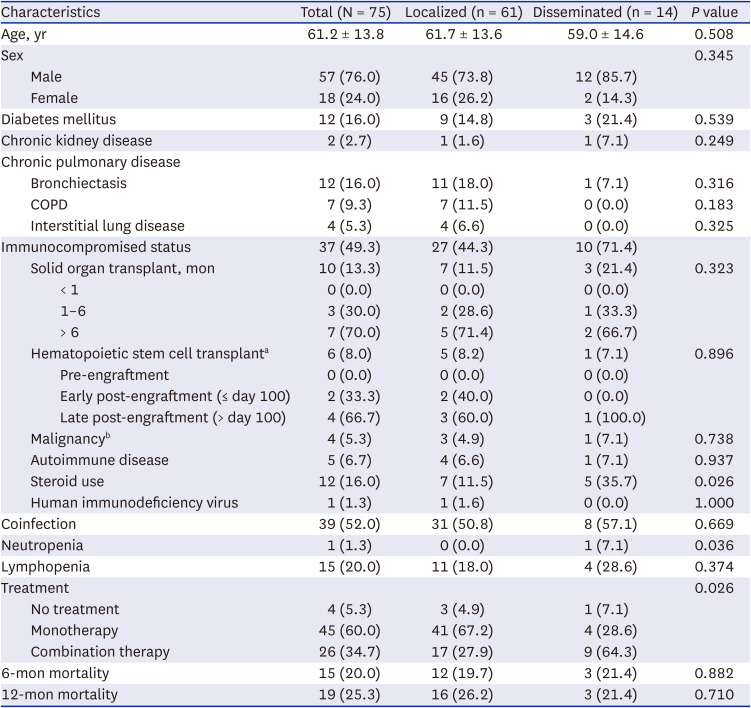
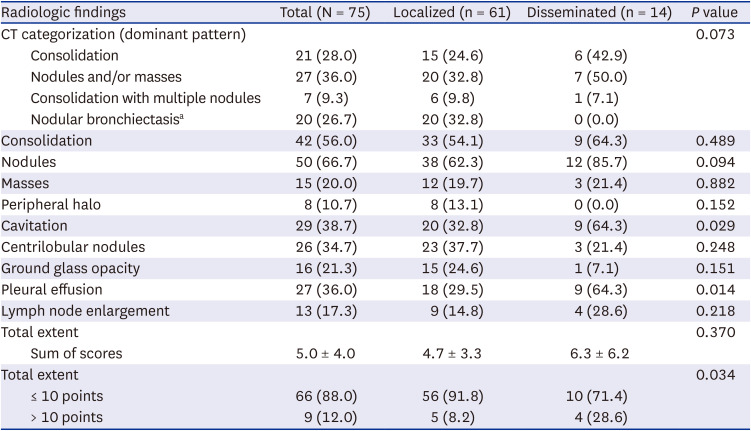

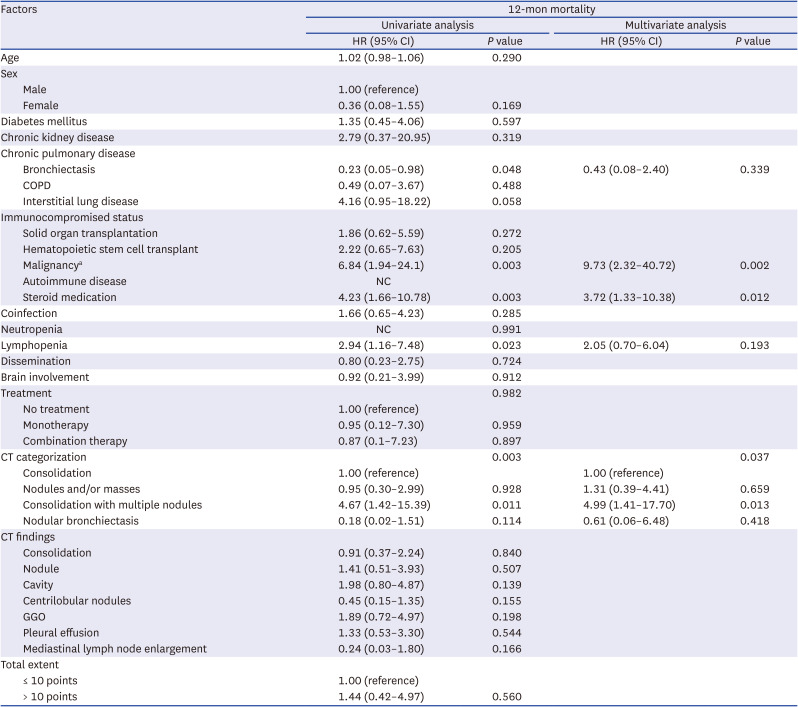




 PDF
PDF Citation
Citation Print
Print



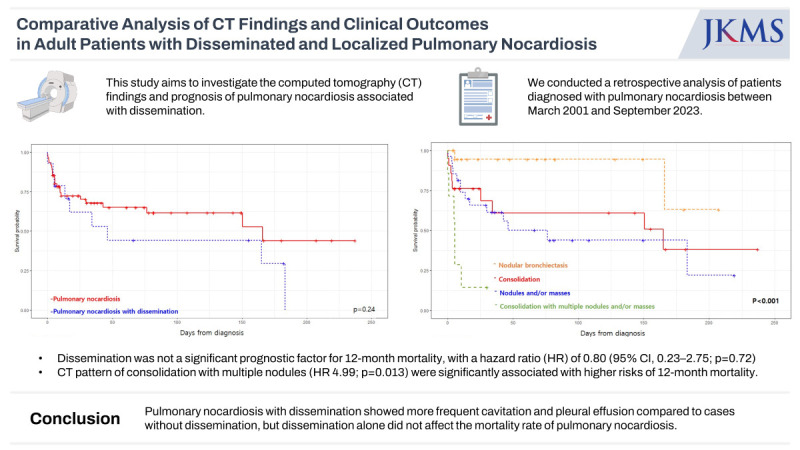

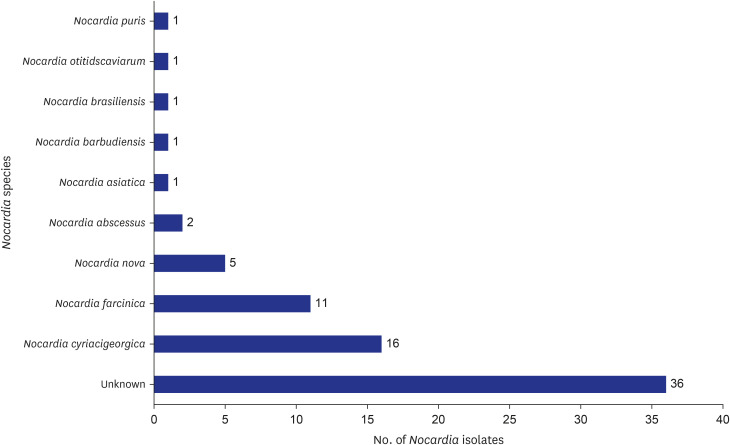
 XML Download
XML Download